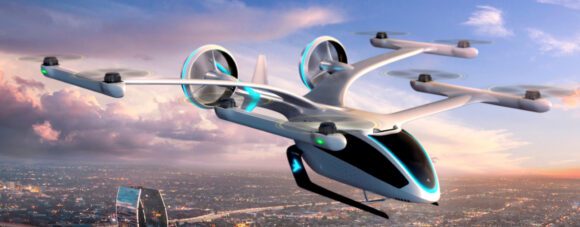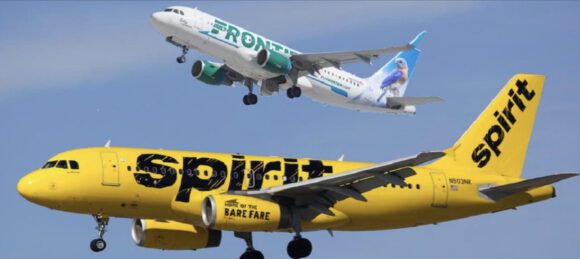
2023 06 14 15.06.40
Electric aviation is the future of air travel, and Eve Urban Air Mobility Solutions and United Airlines are leading the way. The two companies have announced a partnership to develop electric vertical takeoff and landing (eVTOL) aircraft for urban air mobility. The goal is to create an electric commuter aircraft that can transport passengers from city centers to airports in minutes, reducing travel time and congestion on the ground. The two announced a deal in 2021.
Andre Stein, co-CEO of Eve, said: “Our shared goal is to provide residents and visitors to the San Francisco Bay area with efficient and cost-competitive transportation in one of the most densely populated urban areas in the U.S. The Bay Area is perfect for eVTOL flights given its size, traffic, focus on sustainability, innovation, and commitment to add other options for mobility.”
Michael Leskinen, President of United Airlines Ventures, stated: “Urban Air Mobility has the potential to revolutionize how United customers work, live, and travel. Eve’s proposed route is a critical first step towards making this all-electric and quiet commute a reality for Bay Area residents.”
The Rise of Electric Aviation
Electric aviation is gaining momentum as the aviation industry seeks to reduce its carbon footprint. According to the International Energy Agency, aviation accounts for about 2.5% of global carbon dioxide emissions. Electric aircraft have the potential to significantly reduce these emissions, as they produce zero emissions during flight.
Several companies are already developing electric aircraft for various applications, including passenger transport, cargo delivery, and military operations. Eve Urban Air Mobility Solutions, a subsidiary of Embraer, is one of the leading companies in this space. The company is developing eVTOL aircraft for urban air mobility, focusing on safety, sustainability, and affordability.
The Partnership between Eve and United
The partnership between Eve and United is a significant step towards commercializing electric aviation. The two companies will work together to develop an electric commuter aircraft that can transport passengers from city centers to airports. The aircraft will be designed to take off and land vertically, eliminating the need for runways and reducing travel time.
The electric commuter aircraft will be powered by a battery-electric propulsion system, producing zero emissions during flight. The aircraft will also be designed to be quiet, reducing noise pollution in urban areas.
The partnership between Eve and United is a win-win for both companies. United will benefit from developing a new mode of transportation that can reduce travel time and congestion on the ground. Eve will benefit from United’s expertise in aviation operations and its extensive network of airports and customers.
The Benefits of Electric Commuter Flights
Electric commuter flights have several benefits over traditional ground transportation and air travel. Here are some of the key benefits:
- Reduced travel time: Electric commuter flights can transport passengers from city centers to airports in a matter of minutes, reducing travel time and congestion on the ground.
- Reduced emissions: Electric commuter flights produce zero emissions during flight, reducing the carbon footprint of air travel.
- Reduced noise pollution: Electric commuter flights are designed to be quiet, reducing noise pollution in urban areas.
- Increased convenience: Electric commuter flights can provide a more convenient mode of transportation for passengers, as they can avoid traffic congestion on the ground and long security lines at airports.
The Future of Electric Aviation
The partnership between Eve and United is just the beginning of the electric aviation revolution. As more companies invest in electric aviation, we expect a significant shift toward sustainable air travel in the coming years.
According to a report by Roland Berger, the electric aviation market is expected to grow at a compound annual growth rate of 50% between 2025 and 2035. The report also predicts that electric aircraft will account for 15% of the global fleet by 2035.
As electric aviation becomes more mainstream, we can expect a significant reduction in carbon emissions from the aviation industry. This will be a significant step towards achieving global climate goals and creating a more sustainable future.
Conclusion
The partnership between Eve and United is a significant step towards commercializing electric aviation. The development of an electric commuter aircraft has the potential to revolutionize air travel, reducing travel time, emissions, and noise pollution. As more companies invest in electric aviation, we expect a significant shift toward sustainable air travel in the coming years. This will be a significant step towards achieving global climate goals and creating a more sustainable future.
The Bottom Line
Eve’s eVTOL is scheduled to enter service in 2026. The aircraft will be piloted at launch but is planned to evolve towards autonomous operations in the future as technology continues to advance. With the entry into service just a couple of years away, Eve and United will be busy defining routes, designing service locations, and dealing with infrastructural requirements to enable seamless connections for United passengers traveling through their hub at SFO.
Urban Air Mobility is progressing towards reality rapidly, with Eve Air Mobility as the current market leader, with 2,700 plus aircraft commitments. With Embraer continuing to own 80% plus of Eve, the companies are sharing engineering resources, certification knowledge, and service and support networks to provide them a leg up on other start-up UAM programs and maintain market leadership. Eve and United should develop an interesting and successful partnership at SFO, a gateway to the Bay Area and Silicon Valley. Stay tuned as this partnership moves from feasibility studies to action plans and infrastructure development.
Views: 18





